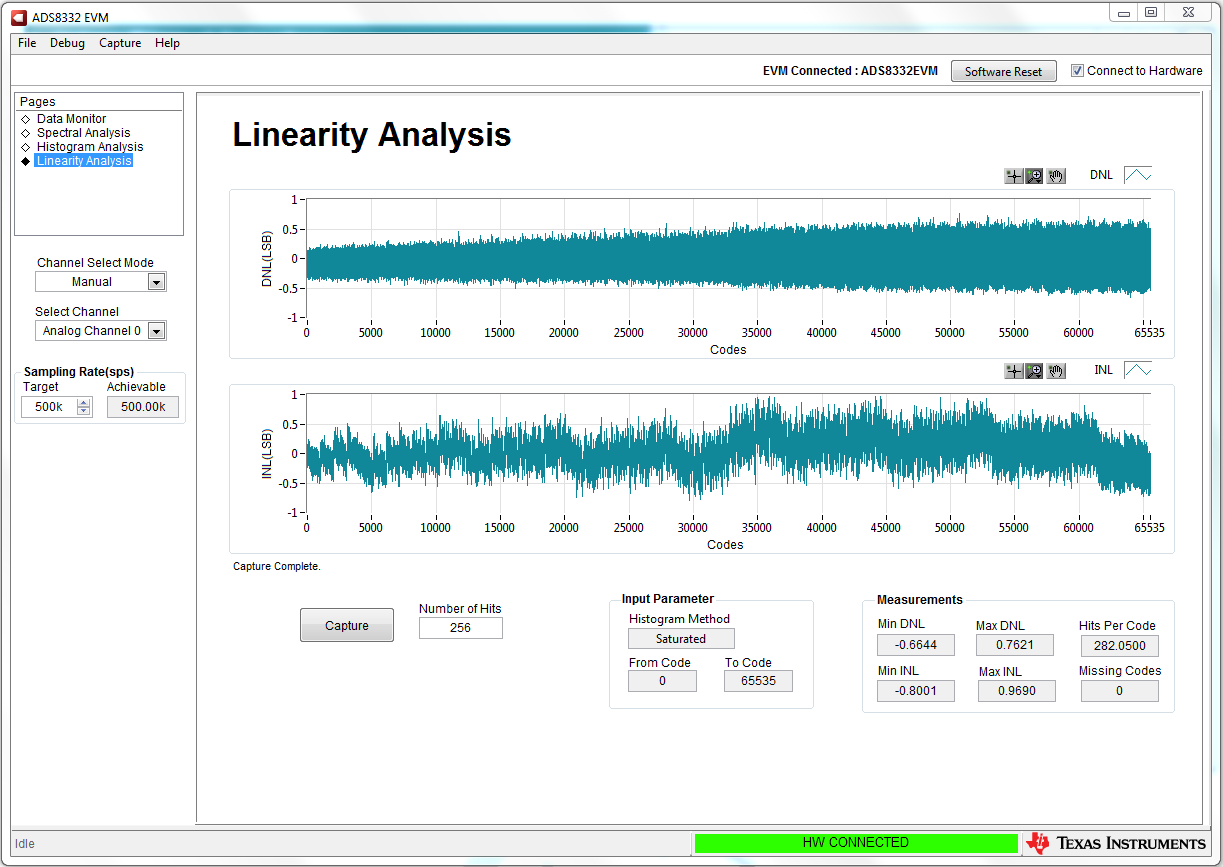SBAU251B July 2017 – February 2023 ADS8331 , ADS8332
6.5 Linearity Analysis Tool
The linearity analysis tool, shown in Figure 6-8, measures and generates the performance differential nonlinearity (DNL) and integral nonlinearity (INL) plots over the entire code range for the ADS8332. A 1-kHz sinusoidal input signal is required, which is slightly saturated (100 mV to 200 mV outside the full-scale range) at the input with very low distortion. The external source linearity must be better than the ADC linearity. The measured system performance must reflect the linearity errors of the ADC and must not be limited by the performance of the signal source. Jumper JP1 must be put into position with the shunt on pins 1-2 to allow for a common voltage of 0.2 V to be applied, thus allowing the inputs to be fully saturated. To make sure that the DNL and INL of the ADC are correctly measured, the external source must meet the requirements in Table 6-2.
| Specification Description | Specification Value |
|---|---|
| Signal frequency | 1 kHz |
| External source type | Single ended, referred to GND |
| External source common mode | 2.25-V |
| Signal amplitude | 4.2-VPP |
| Maximum noise | 35 µVRMS |
| Maximum SNR | 100 dB |
| Maximum THD | –110 dB |
The number-of-hits setting depends on the external noise source. For a 100-dB SNR external source with approximately 30 µVrms of noise, the total number of hits must be 256.
This analysis can take a couple of minutes to run and the evaluation board must remain undisturbed during the complete duration of the analysis.
 Figure 6-8 Linearity Analysis Tool
Figure 6-8 Linearity Analysis Tool